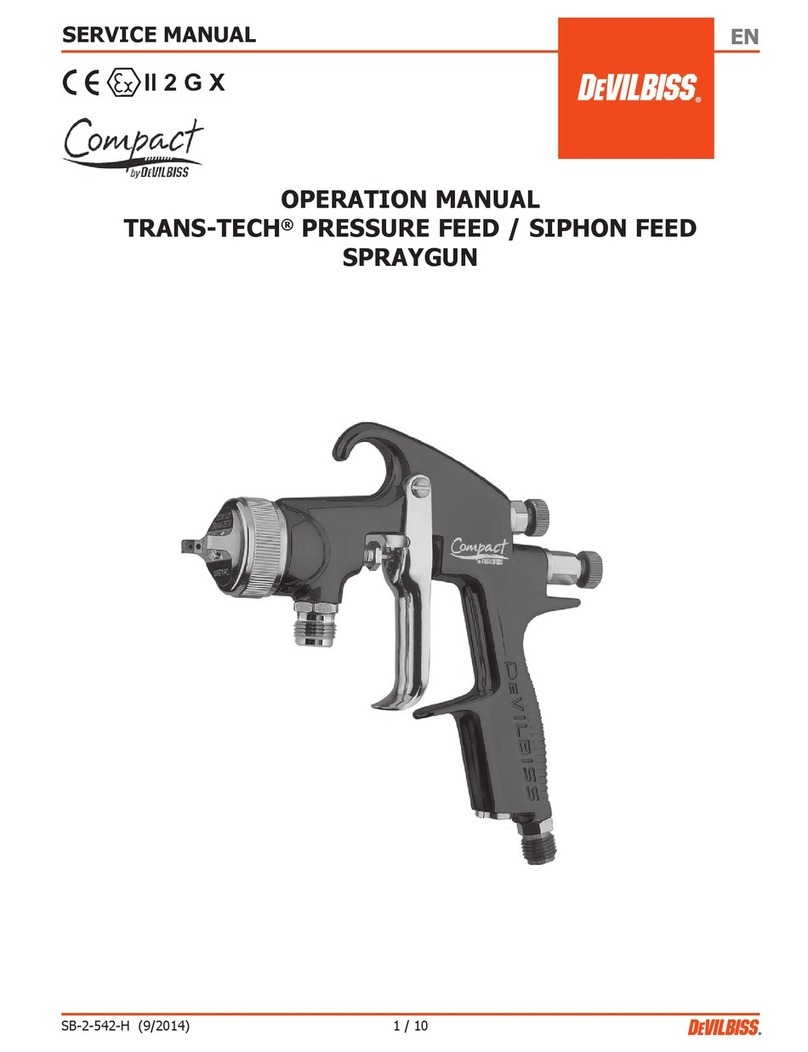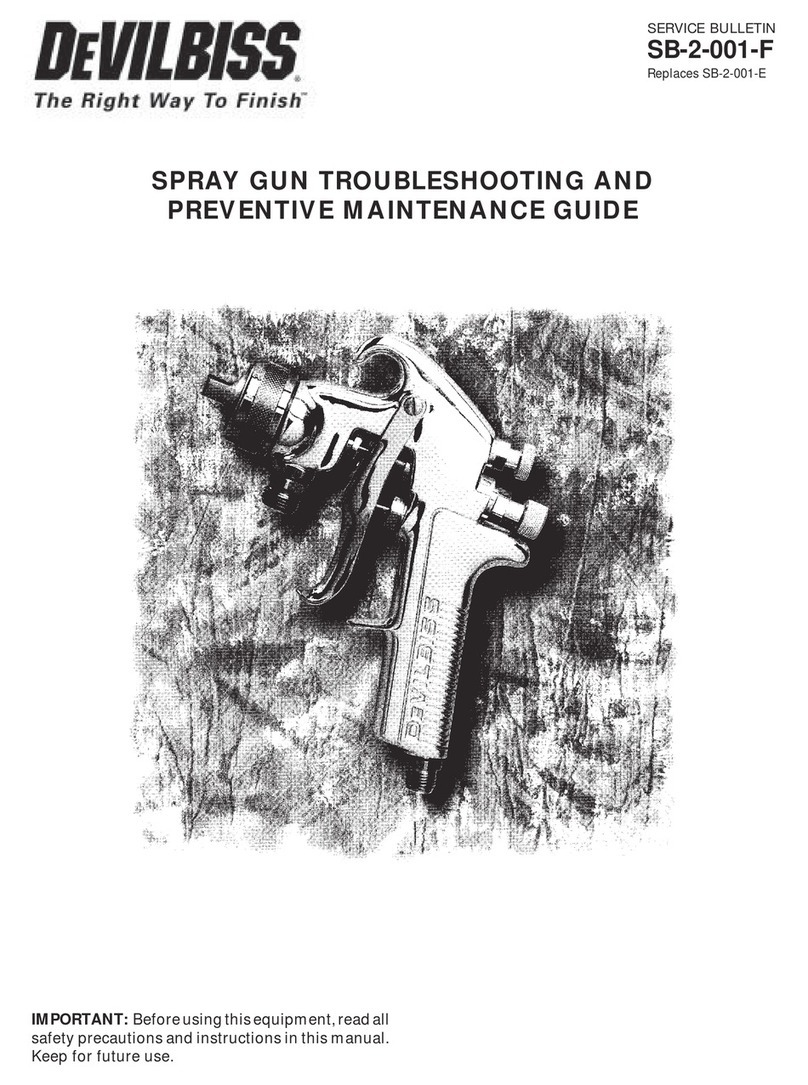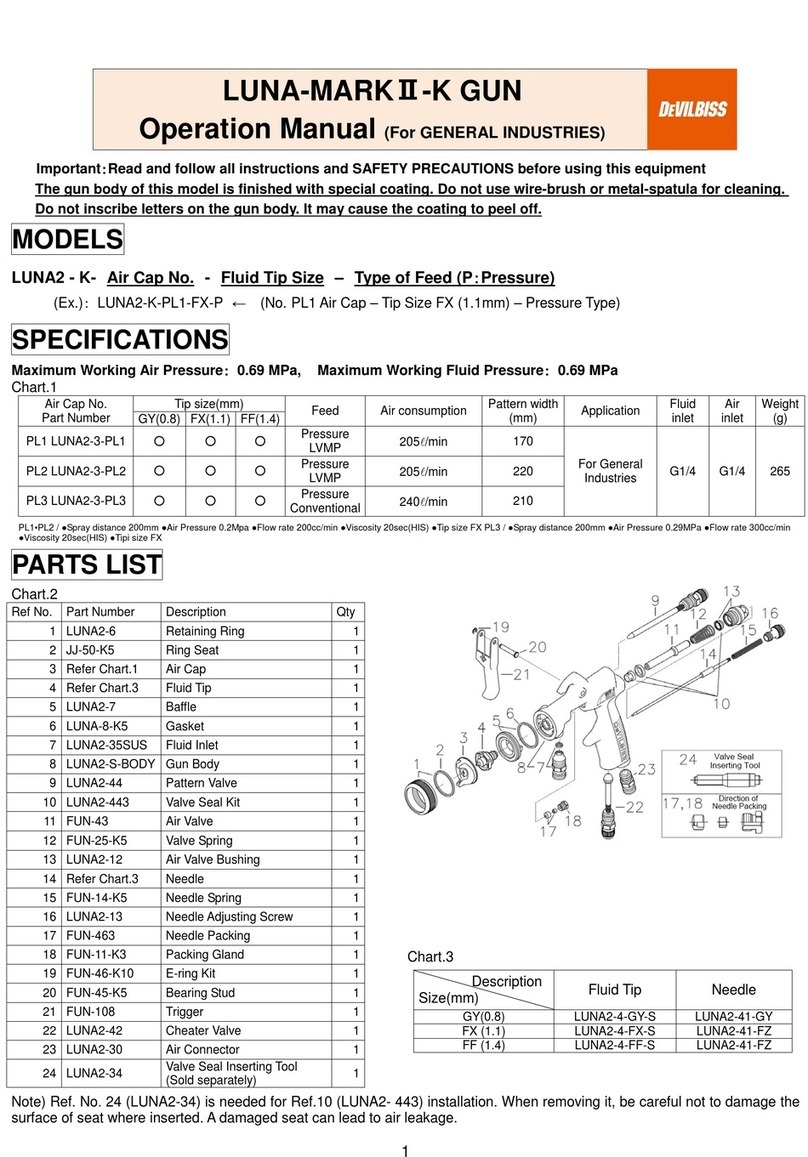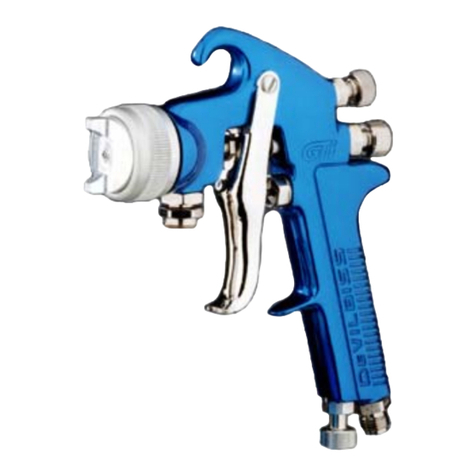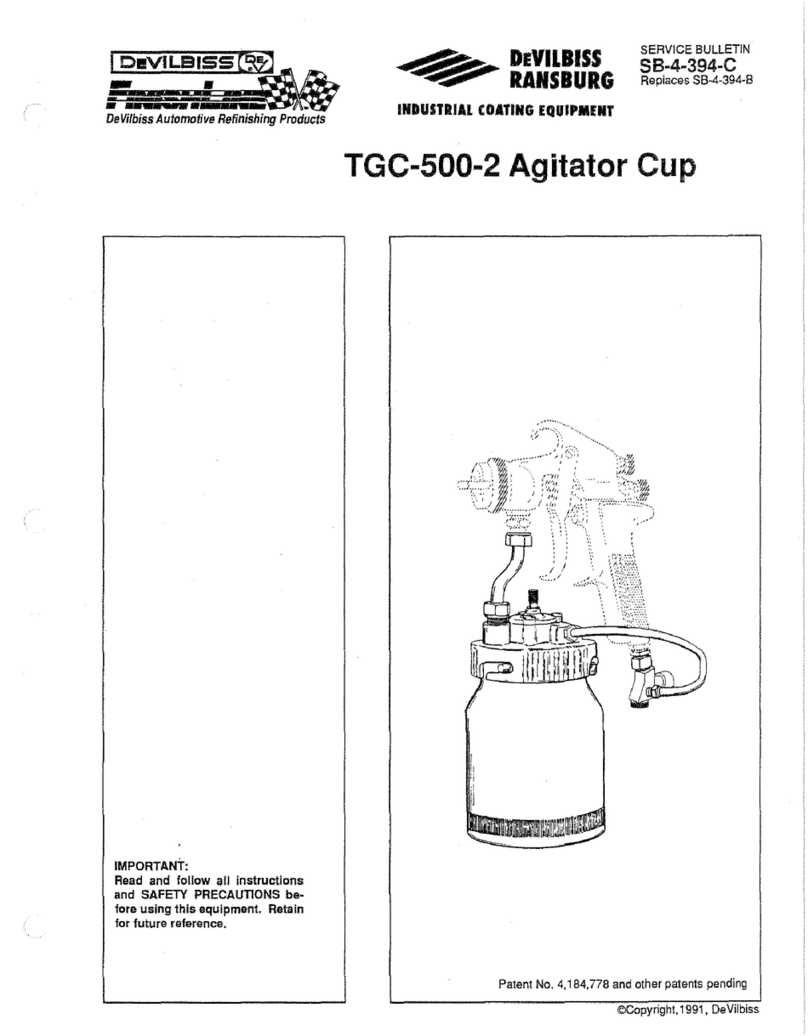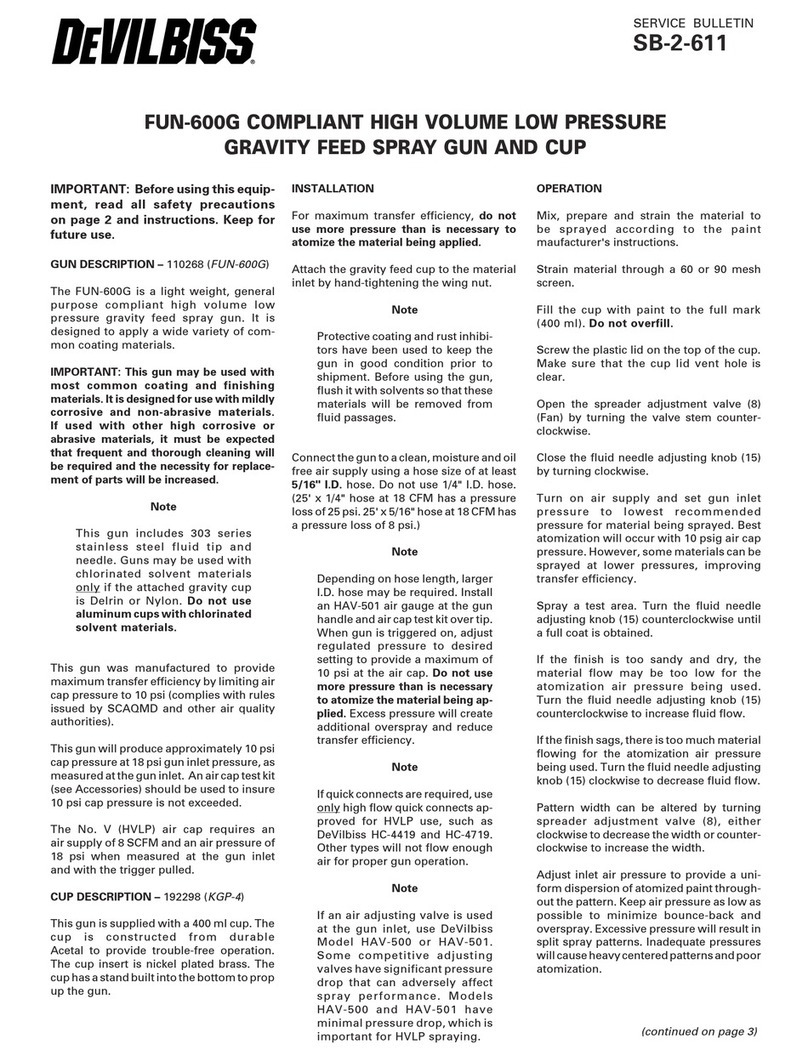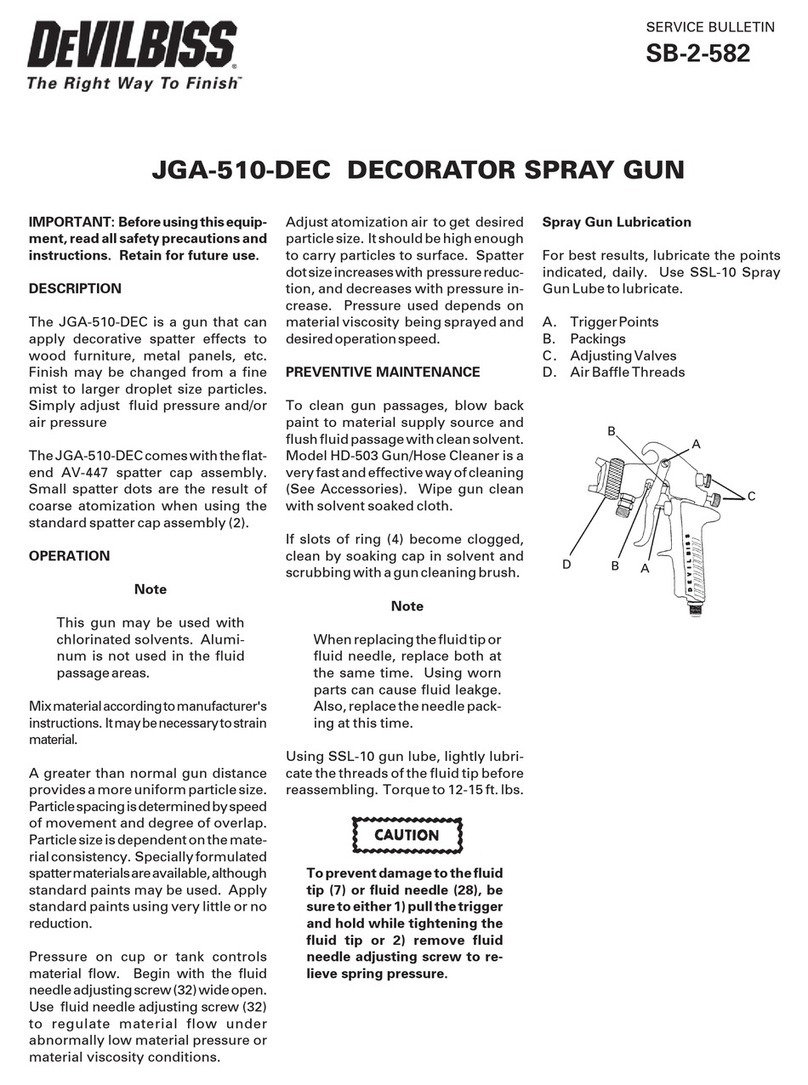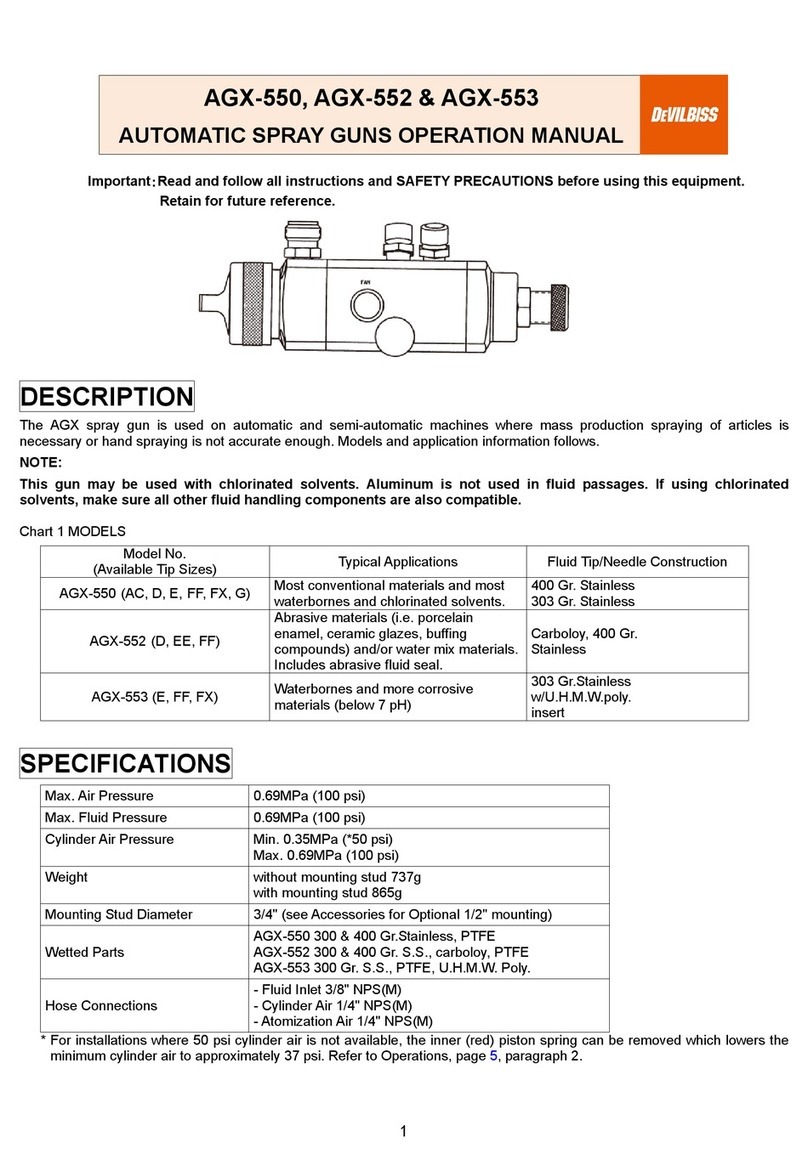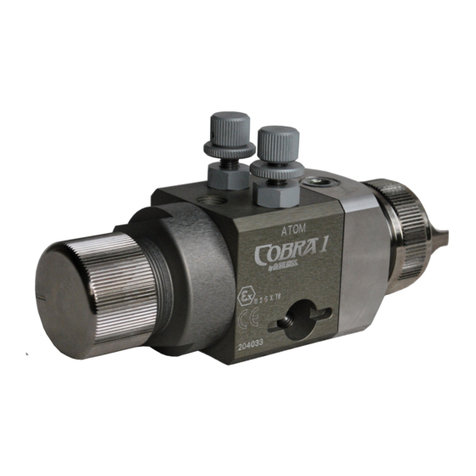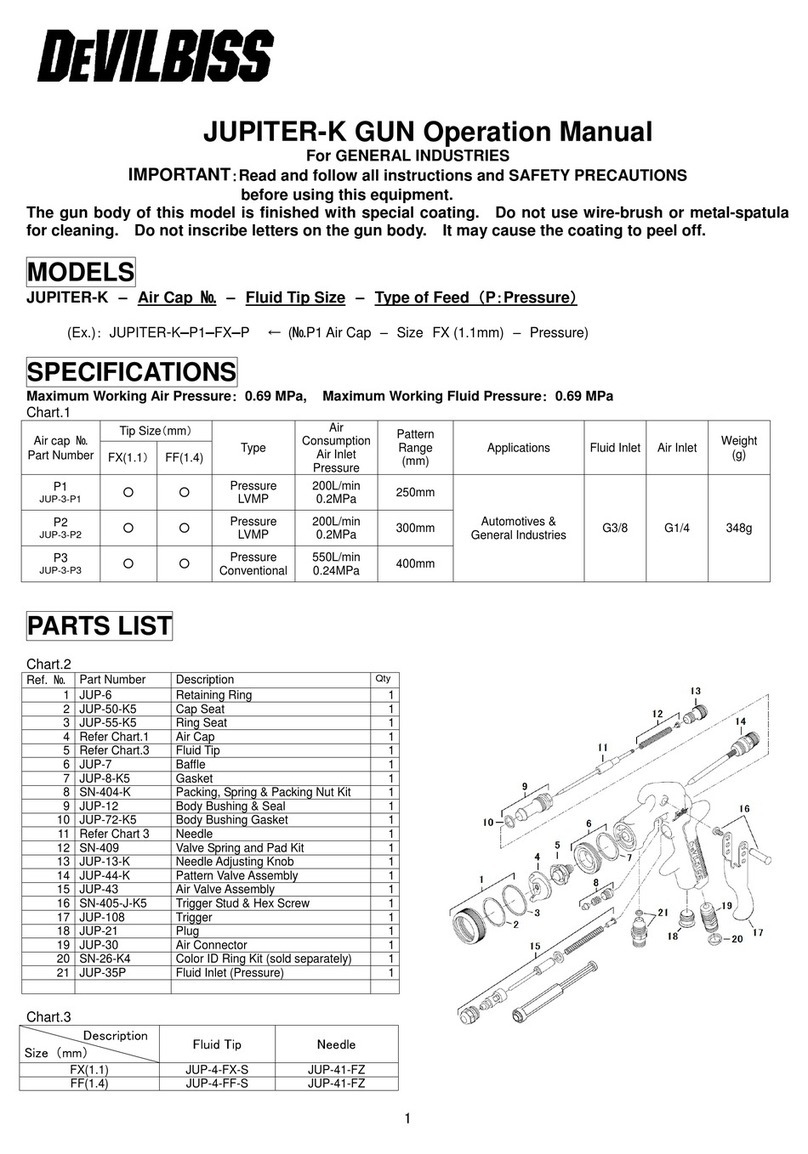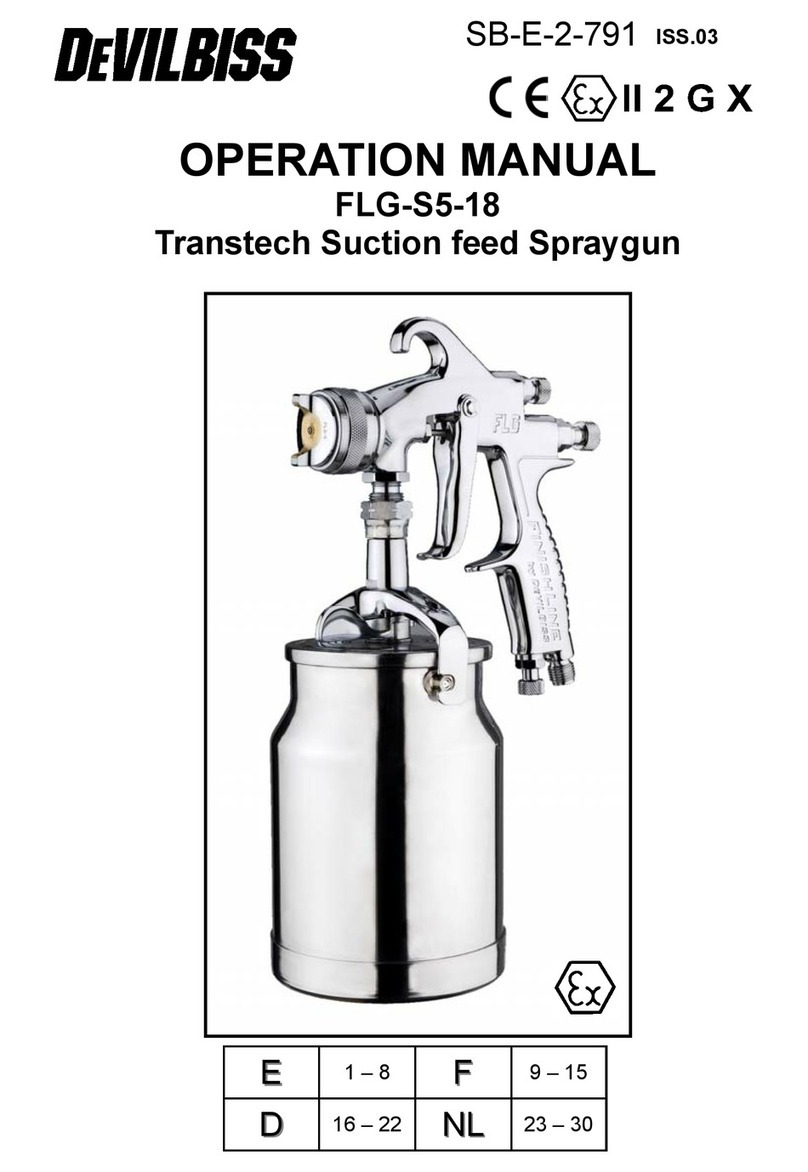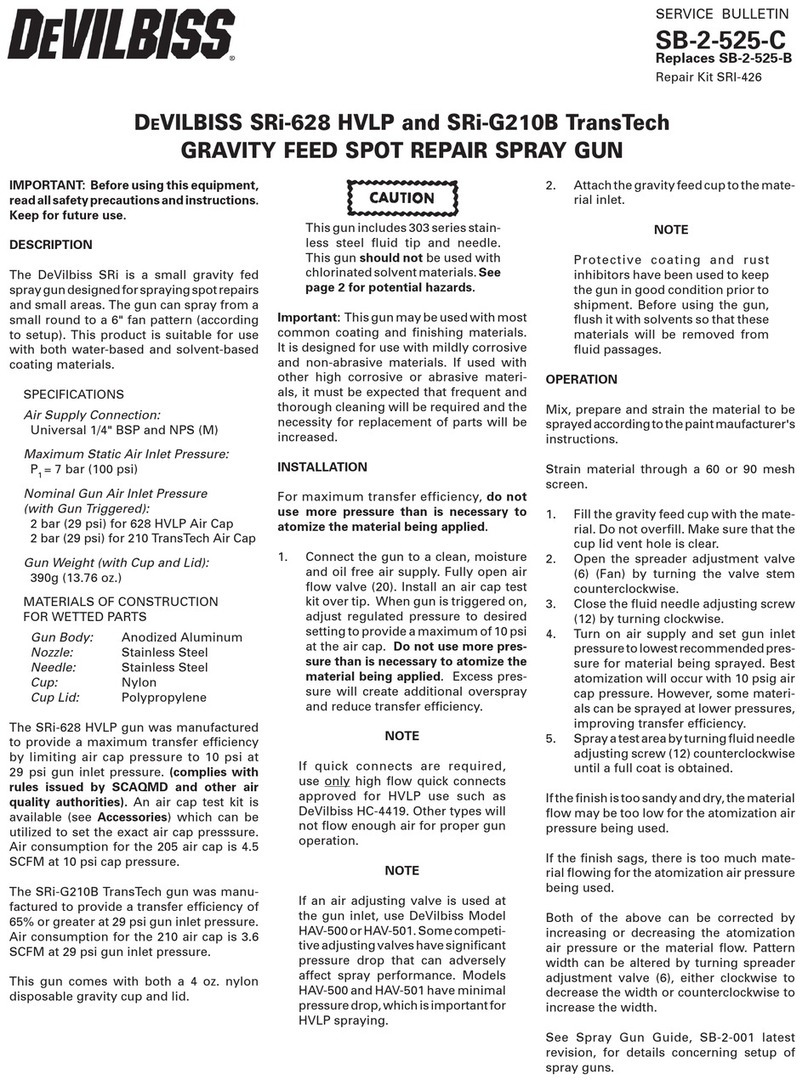EN
GLOVES. Must be worn when spraying or cleaning the
equipment.
HIGH P ESSU E CONSIDE ATION. High pressure can cause serious injury.
elieve all pressure before servicing. Spray from the gun, hose leaks or
ruptured components can inject fluid into your body and cause extremely
serious injury.
WARNING
WEA ESPI ATO . The use of respiratory protective
equipment is recommended at all times. The type of equipment
must be compatible with the material being sprayed.
NEVE MODIFY THE EQUIPMENT. Do not modify the
equipment unless the manufacturer provides written approval.
In this part sheet, the words WARNING, CAUTION and NOTE are used to emphasise important safety information as
follows:
NOTE
IT IS THE RESPONSIBILITY OF THE EMPLOYER TO PROVIDE THIS INFORMATION TO THE OPERATOR OF THE EQUIPMENT.
NOISE LEVELS. The A-weighted sound level of pumping and spray equipment
may exceed 85 dB(A) depending on equipment settings. Actual noise levels are
available on request. It is recommended that ear protection is worn at all times
while equipment is in use.
P OJECTILE HAZA D. You may be injured by venting liquids or
gases that are released under pressure, or flying debris.
CAUTION
Read the followin warnin s before usin this equipment.
KNOW WHE E AND HOW TO SHUT OFF THE EQUIPMENT IN
CASE OF AN EME GENCY.
Hazards or unsafe practices which could result in
minor personal injury, product or property
dama e.
EQUIPMENT MISUSE HAZA D. Equipment misuse can cause
the equipment to rupture, malfunction or start unexpectedly and
result in serious injury.
WARNING
WEA SAFETY GLASSES. Failure to wear safety glasses with
side shields could result in serious eye injury or blindness.
SOLVENTS AND COATING MATE IALS. Can be highly flammable or
combustible when sprayed. Always refer to the coating material supplier's
instructions and safety sheets before using this equipment.
EAD THE MANUAL. Before operating finishing equipment, read and
understand all safety, operation and maintenance information provided in the
operation manual. Users must comply with all local and national codes of
practice and insurance company requirements governing ventilation, fire
precautions, operation and house-keeping of working areas.
Important installation, operation or maintenance
information.
INSPECT THE EQUIPMENT DAILY. Inspect the equipment for
worn or broken parts on a daily basis. Do not operate the
equipment if you are uncertain about its condition.
FI E AND EXPLOSION HAZA D. Never use 1,1,1-Trichloroethane, Methylene
Chloride, other Halogenated Hydrocarbon solvents or fluids containing such
solvents in equipment with aluminium wetted parts. Such use could result in a
serious chemical reaction, with the posibility of explosion. Consult your fluid
suppliers to ensure that the fluids being used are compatible with aluminium
parts.
STATIC CHA GE. Fluid may develop a static charge that must be dissipated
through proper grounding of the equipment, objects to be sprayed and all other
electrically conductive objects in the dispensing area. Improper grounding or
sparks can cause a hazardous condition and result in fire, explosion or elecrtic
shock and other serious injury.
TOXIC VAPOU S. When sprayed, certain materials may be poisonous, create
irritation, or are otherwise harmful to health. Always read all labels, safety
sheets and follow any recommendations for the material before spraying. If in
doubt contact your material supplier.
P ESSU E ELIEF P OCEDU E. Always follow the pressure
relief procedure in the equipment instruction manual.
Hazards or unsafe practices which could result in
severe personal injury, death or substantial
property dama e.
OPE ATO T AINING. All personnel must be trained before
operating finishing equipment.
LOCK OUT / TAG-OUT. Failure to de-energise, disconnect, lock out and tag-
out all power sources before performing equipment maintenance could cause
serious injury or death.
SB-E-2-643 R5.0 4/28
